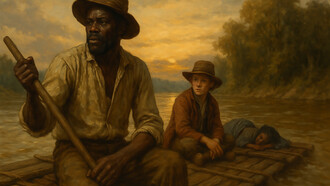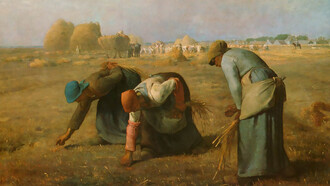Nepal, a small landlocked country nestled in the Himalayas, is renowned for its cultural diversity, rich heritage, and deep-rooted traditions. Despite its relatively small size, Nepal is home to more than 120 ethnic groups and 120 different languages. The diverse landscapes—from the snow-capped peaks of the Himalayas to the fertile plains of the Terai—serve as the backdrop for a culture that blends ancient practices with modern influences. Nepali culture is an intricate mosaic, where religion, art, festivals, food, language, and customs all play vital roles in shaping the lives of its people.
In this article, we will explore various aspects of Nepali culture, including its ethnic diversity, religious practices, festivals, art forms, traditional attire, and food, to offer a comprehensive understanding of the cultural fabric of Nepal.
Ethnic diversity in Nepal
One of the most unique features of Nepali culture is its immense ethnic diversity. The country is home to over 120 ethnic groups, each with its own distinct language, customs, rituals, and ways of life. These groups are spread across the country, from the mountain-dwelling Sherpas in the north to the Tharus in the lowlands of the Terai. Some of the major ethnic groups include:
Brahmins and Chhetris: predominantly found in the hilly regions, these groups are known for their influence in Nepali society, particularly in the fields of education, politics, and religion. They are also largely followers of Hinduism.
Newars: inhabitants of the Kathmandu Valley, the Newars have a unique culture that blends Hinduism and Buddhism. Their festivals, art, and rituals are an essential part of Nepali cultural identity.
Sherpas and Tibetans: living in the high-altitude regions of Nepal, the Sherpas and Tibetan communities follow Tibetan Buddhism and have their own distinct culture, language, and traditions. Their influence is particularly visible in the Everest region.
Magars, Gurungs, Tamangs, and Tharus: these indigenous groups, along with many others, contribute to the diverse cultural landscape of Nepal. They have their own languages, customs, and practices that are closely tied to the land they inhabit.
Despite the ethnic and cultural diversity, Nepal is known for its harmony among these groups. The intermingling of traditions has led to a rich cultural exchange and mutual respect, fostering a sense of national unity that celebrates diversity.
Religious diversity and spiritual practices
Religion plays an integral role in Nepali culture. Nepal is a multi-religious society, with Hinduism being the dominant religion, followed by Buddhism. The coexistence of different faiths is a significant feature of Nepali culture, with shared religious sites, festivals, and customs.
Hinduism
Hinduism is the largest religion in Nepal, with around 80% of the population identifying as Hindu. The religion has a profound influence on Nepali culture, from the architecture of temples to the structure of society. Hinduism in Nepal is marked by its reverence for deities like Lord Vishnu, Shiva, and Goddess Durga and is closely associated with ancient rituals, festivals, and beliefs.
Temples such as Pashupatinath in Kathmandu, one of the holiest Hindu temples, and the Swayambhunath Stupa (Monkey Temple), also a revered site for both Hindus and Buddhists, are crucial elements of Nepal's spiritual landscape. The spiritual atmosphere created by these temples and their associated rituals permeates everyday life in Nepal.
Buddhism
Nepal is also the birthplace of Gautama Buddha, making it a significant site for Buddhists worldwide. Lumbini, the birthplace of Buddha, is a UNESCO World Heritage site and attracts pilgrims and tourists alike. Tibetan Buddhism is prevalent among the Sherpas and Tibetan communities of Nepal, especially in the mountainous regions.
Buddhist traditions and rituals are interwoven with Nepali culture, particularly in art, architecture, and festivals. Stupas, monasteries, and prayer wheels are common features in the Nepali landscape, and Buddhist festivals like Buddha Jayanti (the celebration of Buddha’s birth) are widely observed.
Other religions
Though the majority of Nepalis are Hindus or Buddhists, the country is also home to smaller communities of Christians, Muslims, and adherents of indigenous belief systems. These communities practice their religions freely, contributing to Nepal's religious diversity and promoting tolerance and respect for different faiths.
Festivals and celebrations
Festivals are central to Nepali culture, reflecting the country’s religious and cultural diversity. These celebrations are a blend of sacred rituals, joyous gatherings, and family traditions. Some of the major festivals include:
Dashain
Dashain, the longest and most important festival in Nepal, is a Hindu festival that celebrates the victory of good over evil. It marks the victory of Goddess Durga over the demon king Mahishasura. The festival is observed for 15 days, during which families come together, perform pujas (rituals), and receive blessings from elders. Dashain is also a time for feasting, family gatherings, and the giving of tika (a mixture of yogurt, rice, and vermilion) to younger family members.
Tihar
Tihar, also known as the festival of lights, is another significant Hindu festival in Nepal. It is celebrated for five days and honors different animals like dogs, cows, and crows, along with the goddess Laxmi, the goddess of wealth. People decorate their homes with oil lamps, candles, and colorful rangoli patterns, creating a festive and welcoming atmosphere. The festival is a time for unity, cleanliness, and offering gratitude for the animals and natural elements.
Teej
Teej is a festival primarily celebrated by Nepali women, especially in the Terai and hilly regions. It is dedicated to Goddess Parvati and is a celebration of marital bliss, devotion, and women’s strength. Women fast, sing, and dance, praying for the well-being of their husbands or for the desire to find a good husband. The festival is marked by vibrant processions and festive attire.
Holi
Holi, the festival of colors, is celebrated by Hindus across Nepal, marking the arrival of spring. People throw colored powders at each other, sing, dance, and celebrate with friends and family. Holi signifies the victory of good over evil, and it is a time for reconciliation and joy.
Buddha Jayanti
Buddha Jayanti celebrates the birth, enlightenment, and death anniversary of Lord Buddha. It is observed with processions, prayers, and rituals at Buddhist stupas and monasteries. Lumbini, the birthplace of Buddha, sees large gatherings of pilgrims and visitors during this time.
Traditional clothing and attire
Traditional clothing in Nepal reflects the country’s diverse cultural landscape. The attire varies by ethnicity, region, and occasion, but several styles are widely recognized:
Sari and Cholo (for women): in Hindu and Newar communities, women often wear a sari, a long piece of cloth wrapped around the body, paired with a cholo (blouse) and mantikka (headpiece) for special occasions and festivals.
Daura Suruwal and Topi (for men): Nepali men typically wear a daura suruwal, a long tunic with a tie at the waist, along with a topi (cap), especially during festivals and formal events.
Sherpa attire: The Sherpas and other Tibetan-influenced communities wear traditional woolen garments to protect themselves from the cold. These clothes are often adorned with intricate patterns and embroidery.
Traditional attire is not only a symbol of cultural identity but also holds significance during religious events and festivals, where color, fabric, and design convey various meanings.
Nepali cuisine
Nepali cuisine is a delightful reflection of the country’s cultural diversity, with regional variations based on geography, climate, and ethnic influences. The staple food is dal bhat, which consists of lentils (dal), rice (bhat), and various vegetable curries, chutneys, and pickles. This dish is commonly eaten every day and is a symbol of hospitality.
Other popular Nepali foods include:
Momo: dumplings filled with meat or vegetables, steamed or fried, often served with a spicy dipping sauce.
Sel Roti: a traditional ring-shaped rice donut, often made during festivals.
Gundruk: a fermented leafy vegetable that is an important part of the diet in the hilly regions.
Chatamari: often referred to as Nepali pizza, it is a rice flour pancake with various toppings, traditionally eaten by the Tamang and Gurung communities.
Food is a central part of Nepali culture and is often shared among family and community members. Hospitality is an essential aspect of Nepali society, and guests are always offered food as a sign of respect.
Art, music, and dance
Nepali art is deeply intertwined with the country’s religious and cultural practices. Traditional Newar art, for example, features intricate woodwork, metal crafts, and paubha (Nepali scroll painting), often depicting Hindu and Buddhist deities.
Music and dance play an essential role in Nepali festivals and social events. Folk music, with its distinct rhythms and instruments like the madal (a drum), is a popular form of expression. Dance forms such as Lakhe and Gorkha dances are performed during cultural ceremonies and festivals, showcasing the vibrancy of Nepali heritage.
Conclusion
Nepali culture and tradition are the lifeblood of the country, offering a unique and rich blend of ethnic diversity, spiritual practices, festivals, music, and food. Despite the challenges posed by modernization and globalization, the preservation and celebration of these traditions remain crucial for maintaining Nepal’s cultural identity.
In a world that is increasingly connected, Nepal’s cultural richness stands as a testament to the resilience of its people and their unwavering commitment to preserving their heritage. By understanding and appreciating Nepali culture, one can gain insight into the values, beliefs, and social fabric that make this Himalayan nation so distinct and vibrant.















